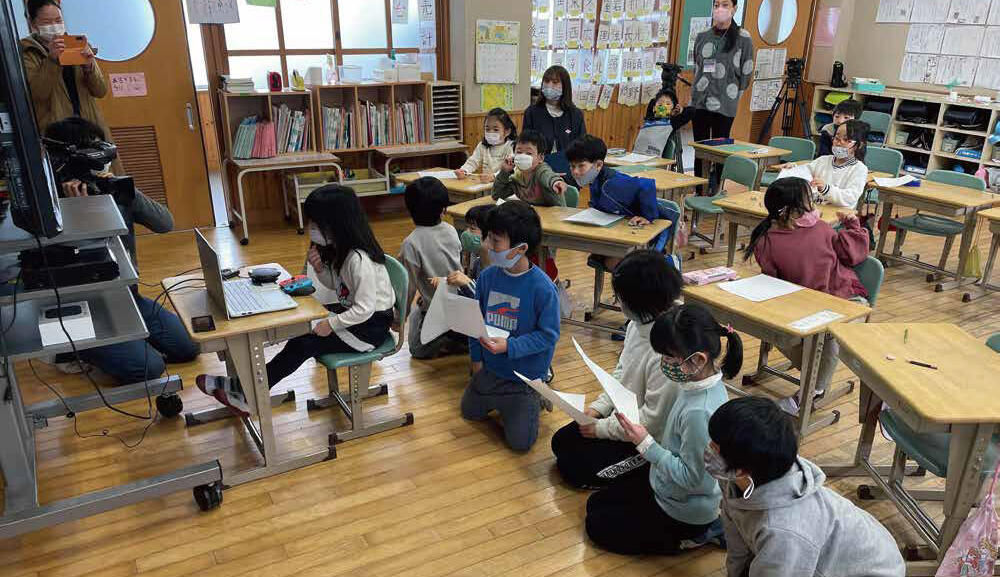Business Development and Industrial Relations Department
Avatar Robot to Offer Futuristic Viewing Experience
JAXA Provides Remote Museum Tour to Elementary Students in Oita
JAXA is engaged in the AVATAR X program within the JAXA Space Innovation through Partnership and Co-creation (J-SPARC) framework. The program aims to explore use of the Avatar technology (robotic avatar system to enable a human to remotely control the robot to act as his/her proxy, a setting for providing various new personal experiences), seeking to catalyze new space-based businesses and engaging the participation of about 30 public and private organizations. As part of the program, JAXA offered a teleclass session to elementary school students in Oita Prefecture, on a request from the local government, by allowing them to make a tour around the museum attached to the Tanegashima Space Center in Kagoshima Prefecture remotely from their school.
ICHIKAWA Chiaki makes a brief report on the project as a J-SPARC Producer. To give the background, she refers to the growing interest in space-themed activities in the local community against the backdrop of the recent decision to select Oita Airport as a host of the “space port” development project. She added that the teleclass session was designed so as to allow young students to enjoy virtual tour experience to develop their interest in Japan's space development efforts as well as the regional contribution to rocket launch missions.
Prior to the remote class, participating students learned about Japan's space development history. In the class, museum staff gave the students a guided tour remotely via the “newme” avatar robot. Students operated “newme” in turns from the in-school classroom, referring to the provided monitor display, to enjoy seeing exhibitions related to rockets, artificial satellites, and the Japanese Experiment Module “Kibo” on the International Space Station (ISS).
“Normally, “newme” is operated using arrow keys on a computer keyboard. For the particular purpose of this project, we adopted a home-use game controller. Students operated the controller adeptly to shift their vision vertically in front of rocket and “Kibo” module mock-ups in accordance with the related real-time explanations. I think they grasped the size of the objects and took a close look at structure details” (ICHIKAWA).
In the Q&A session following the remote tour, participants asked a number of questions, including, “Why was Oita Airport selected to be a host of the space port?” and “How many days will it take to reach the moon?” From these, ICHIKAWA felt many young students have a high expectation for a future opportunity for space travel to be made available from local facilities.
“I believe that the project successfully stimulated many students' interest in space development activities, while allowing them to engage in interactive learning activities, which have been reduced recently as a result of prolonged implementation of anti-coronavirus measures. Going forward, we will enhance the remote museum tour program to make a similar opportunity available to those with difficulty visiting the actual location, thereby approaching many more people to encourage their understanding of Japan's space development activities.”


Profile

|
|
|---|
All the images are copyrighted ©JAXA unless otherwise noticed.
- Home>
- Global Activity>
- Public Relations>
- JAXA’s>
- JAXA's No.84>
- JAXA Provides Remote Museum Tour to Elementary Students in Oita